- Home
- Peter Carey
30 Days in Sydney: A Wildly Distorted Account Page 7
30 Days in Sydney: A Wildly Distorted Account Read online
Page 7
They say the pool has concrete cancer. It'll take millions to replace. If someone doesn't buy it, it'll crumble into the sea.
This place is a Sydney institution.
Well, it is, says Lester, but if Kerry Packer wants it, then Kerry Packer will get it.
But the dog is off and we are after him, walking briskly round that clifftop walk that comes down into Tamarama Beach. Can Rio match this? The high sandstone cliffs? The intimate bays? The never-ceasing unfolding of beaches tumbling south, Tamarama, Bronte, Clovelly Coogee, so many of them that not only have the rich not bothered to claim the territory, but the dead have been allocated acres of absolute ocean front. The dead in Waverley Cemetery have the best views in the world.
But this is one of the distinctive features of Sydney, that there are so many miles of harbour, so many miles of coast, that the normal pressures for space are far less, and so places like the Waverley Cemetery and the Bondi RSL will survive, if not for ever, then longer than you might expect.
We retrace our steps along the clifftops and when we come back above the sand of Bondi a small crowd has gathered and TV news vans are arriving.
It's a protest, said Lester. They're building the beach volley-ball stadium here.
Here? They're putting it here? For the Olympics? I was astounded. How could they put it here, in the middle of Bondi?
You could always join the protest, said Kelvinator. Look at the crowd. There are at least twenty-eight people who agree with you.
And what do you think? I asked my friend.
They're losers! he giggled.
The jocks are in charge, explained Lester.
It was a shocking thought that a city could have so little appreciation of this place that they would desecrate it at a time it was to have its biggest influx of visitors.
It can't be stopped?
Not a chance, said Kelvinator. All twenty-eight of them can bury themselves in the sand up to their eyes and no one will change this venue. The jocks are in control. The fix is in, mate. The deal is done.
I would revisit Sydney in October. The Olympics were finally over but everyone was still chuffed, high as kites, over the moon, pleased as Punch, jocks and non-jocks, just exhilarated by the experience of the Games. Nothing else had been done in Sydney for those two weeks. People went to the Games or stayed at home and watched TV. They stopped shopping. Retail sales dropped 20 per cent. Intellectuals who had been sour and cynical in April had changed their minds completely and even those who had felt as I did about the beach volley ball would tell me, Peter, it was not so bad. It's all gone now. The beach is back to normal.
In the great wash of pride that the Games left in their wake my friends seemed inclined to forget the continual scandals that had marked the years before the Games began.
It's what you expect, said Lester.
Yes, there was corruption, Kelvin joked, but it paid off.
There were so many episodes one could choose to illustrate the Sydney way of doing business, but the most breathtaking involved Kevan Gosper, once a famous athlete, now the vice president of the International Olympic Committee.
Until this particular scandal broke all Australia knew that a fifteen-year-old Sydney girl named Yianna Souleles was to be the second runner to carry the torch on its way from Greece. She was an Australian of Greek descent. She was not only a gifted athlete but also very pretty. She was perfect. She was us, the new Australia.
Then suddenly the old Australia showed its face, rearing up from deep in the CBD.
Yianna Souleles was bumped.
In her place would be . . . Kevan Gosper's eleven-year-old daughter.
Sophie Gosper, said the Sydney Morning Herald, is too young by one year to run with the torch in Australia, but was invited by the Greeks to participate in their ten-day relay.
And how did that happen?
SOCOG chief executive Sandy Hollway said he did not know how the decision had come about but denied that the Gosper family had jumped the queue.
He described the issue as a storm in a teacup.
The same article also reported that Mr Gosper was already under investigation by the IOC ethics commission over allegedly accepting excessive hospitality during Salt Lake City's successful 2002 Winter Olympics bid.
The Herald said that Gosper denied having anything to do with the decision to make his daughter the first Australian torch-bearer in the Olympic relay.
And that was pretty much that.
Sydney was momentarily outraged but Gosper never felt the need to apologise, and whatever disturbance was caused has since been washed as smooth as the sand on Bondi Beach.
CHAPTER ELEVEN
TAKE THE CAR.
No.
Why not?
I don't want to.
You're getting a taxi all the way to Ledoux's place? That's like fifty bucks.
No, I'll get the ferry to Manly then take the bus.
It'll take you hours, Peter. Please take my car.
Kelvin was my friend. I should have been able to confess my problem with the bridge, but instead I lied.
It's for the book, I said. I want to write about the CBD, about the Manly Ferry.
CHAPTER TWELVE
THERE ARE FEW THINGS more pleasing, suggested Governor Phillip, who never had the misfortune to see what I saw later that morning when I walked through the shadows of the Central Business District, all the way from Town Hall Station down to Circular Quay where I intended to catch the Manly Ferry. There are few things more pleasing, reflected the senior-ranking white man, sitting inside his very badly constructed house, dipping his goose quill into his ink pot to write: nothing is more pleasing than the contemplation of order and useful arrangement, arising gradually out of our tumult and confusion; and perhaps this satisfaction cannot anywhere be more fully enjoyed than where a settlement of civilised people is fixing itself upon a newly discovered or savage coast.
He had proclaimed this wild place 'Sydney', although its inhabitants continued to call it 'the camp' for many years to come. The Tank Stream ran down its centre. Tents and huts were lined up north-south and east-west, drawn up in ranks facing the parade ground, with the convicts' tents in long neat rows close by. Introducing a class distinction that you can see in Sydney 210 years later, the convicts and marines were Westies, relegated to this area to the west of the Tank Stream, while the governor and his officers took possession of the east.
This plan of Sydney, recorded in a detailed map made thirty-five days after the first arrival of the whites, shows us a town in its moment of greatest possibility. It was, of course, a prison camp so a convict had already struck a marine with a cooper's adze and been sentenced to receive fifty lashes. Another had committed a petty theft and been marooned out on the island of Pinchgut to see how he liked a starvation diet of bread and water. But no one had yet had the flesh flayed from their spine. There had not yet been murder. The Eora tribe had not been decimated by smallpox. The convicts and the blacks had not quite begun that dreadful battle that continues to this day. The Tank Stream was not sullied by the pigs. The soldiers and their prisoners had not yet instigated those little crooked deals which would poison the moral groundwater for centuries to come. The officers were not yet trading in rum or using the free supply of slave labour to transform themselves into country gentlemen. At this moment, while 300 men huddled in tents with their crops already wilting in the sun, the commandant of this little gulag actually began to imagine an extraordinary city. Governor Arthur Phillip summoned up 'Sydney'; he willed it into being.
Lines are there traced out, he wrote, which distinguish the principal street of an intended town, to be terminated in the governor's house, the main guard and the criminal court. In some parts of this space temporary barracks at present stand, but no permanent buildings will be suffered to be placed except in conformity to the plan laid down. Should the town still be extended in future, the form of other streets is also traced in such a manner as to ensure the free circulatio
n of air. The principal streets, according to this design, will be 200 feet wide.
It is the thought of those 200-foot-wide streets that takes your breath away today and when, fresh from my stroll on Bondi Beach, I walked through that unloved opportunistic CBD, as I entered the shadow of the monorail, that brutal artery grown to feed the multiplying mutant cells of Darling Harbour, I could only mourn the passing of this city of vistas, although God knows how long they ever were a possibility, for just a few months after Phillip described his town-plan the grand design seems to have given way to workaday expediency and there was a dirt track meandering from the governor's temporary quarters to the lieutenant governor's house and then pursuing a desultory course to the hospital buildings on the western side of the cove.
Phillip, who had begun by dreaming like Christopher Wren, now faced the daily question of putting up a shelter, any shelter, that would not collapse on its inhabitants. And now it became clear just how poorly provisioned this settlement was. Daniel Defoe had done a better job for Robinson Crusoe than the Home Office had done for Arthur Phillip. Soon the governor would write to Lord Sydney requesting better axes, better spades and better shovels, as those they had were the worst that ever were seen. In all his prisoners there were but fourteen carpenters. He had 300,000 nails but the trees were alien and seemed, to English eyes, unsuitable. The timbers were too hard, or twisted violently in the sun. The Aboriginals gave no clue, or none that an Englishman was prepared to follow, for the savages lived in caves around the harbour's edge or made temporary shelter by peeling bark from the strange rough-skinned trees.
There was no lime and so no mortar could be made. At first there seemed no clay suitable for bricks but even when clay was found and the settlers busied themselves extracting lime from the shell middens on the foreshores, there was not, in all that expensively provisioned fleet, a single man with any real experience of making bricks.
I was musing on this issue when I was interrupted by that opinionated fellow out of Flann O'Brien.
I believe you are wrong about the brick-making, said he. Is there not a museum in Sydney celebrating just such a chap?
You are thinking of James Bloodsworth?
I saw the very bricks he made. They have them stacked away like antique books.
Yes, but have you touched them? They crumble in your hand like tea cake. They are soft and sandy and fired at far too cool a temperature.
A 'master brick-maker and builder'. I quote exactly.
I don't believe Bloodsworth was a master. He was convicted of the theft of one game cock and two hens belonging to a baker from Surrey.
Note the baker. That is the heart of it. Agh, poor old Bloodsworth. He stole a loaf of bread, I do not doubt it.
Wait. I am attempting to show what human clay he was made of.
You are getting off the track, attacking poor Bloodsworth.
I am not off-track. I am showing you what material Governor Phillip had available to make his city with. At the time of Bloodsworth's trial there were two 'detained against the prisoner for burglary and he had also been charged on suspicion of being concerned in robberies and burglaries with 'the notorious gang that then infested the neighbourhood of Kingston'.
So the ruling class alleged.
Yes they did. Two of that gang were executed, another sentenced to transportation. But in Bloodsworth's case there was, I quote, a petition for mercy, signed by militiamen, day labourers and others of a very inferior situation, many others also of persons unknown in Kingston but not the name of a reputable tradesman belonging to the town except two who represented to me that they signed it to be relieved of incessant importunity.
And your point is?
On the strength of his associates, it is clear he was not a master brick-maker, that he was probably as suited for making bricks as the timber of the cabbage-tree palm was suited for making houses.
Did he not build the first Government House?
Did not the building very nearly fall down around Governor Bligh's head?
Ah, they were hard times.
The times were hard, and making bricks was the worst job in the colony and carting the bricks was an extreme punishment. There were no horses or oxen and only three carts and the twelve convicts were in the harness pulling three-quarters of a ton.
They fired roof tiles as well but, no matter what the book says, no master brick-maker oversaw the process and the tiles were porous and when they became heavy with water the roofs collapsed, and so on, and so forth. The military lived in daub and wattle shanties. Two years after Phillip's first grand vision the houses and public buildings were springing up without regard for any plan at all.
And for a certain period of its history, the result seems to have been not uncharming. It is not parallelogramic and rectangular, said Trollope a century later. One may walk about it and lose the direction in which one is going. Streets running side by side occasionally converge - and they bend and go in and out, and wind themselves about, and are intricate.
Much of what 'Sydney' means was set in the difficult early years under Phillip, not merely its haphazard town-plan but also the character of its people. In these years you can look for the explanation of our persistent egalitarianism, our complicated relationship with authority, our belief that the government should care for us. The fact that soldiers and convicts starved together forged us in a kind of fire, and in this - no matter what cruel sign our city was born under - we were fortunate indeed.
But the actual nature of the modern Central Business District, its curiously unloved opportunistic aesthetic, owes more to forces that were not able to properly flex their muscles until Governor Arthur Phillip sailed for home.
Phillip left behind a colony in which convict labour was intended for the 'public good', an iron-fisted but paternalistic social economy that the historian M.H. Ellis quaintly describes as 'socialistic'.
In the following two-year period, while they waited for the next naval man to take the post of governor, the colony was administered by military men, Grose and Johnston. Grose, amiably declaring himself to have no talent for administration, gave Captain John Macarthur the power to do the job on his behalf. As a result, when Governor Hunter finally arrived in September 1795 he discovered a very particularly Australian form of capitalism at work.
Doubtless following Macarthur's advice, Grose had rewarded his men with generous land grants. Every officer, Hunter recorded with surprise, had nearly 100 acres under cultivation: I mean, he wrote, with stock and all; the poorest of which will return wheat or other grain into store from one hundred and two hundred pounds this year.
But the soldiers were not only turned farmer, they were merchants too. Macarthur's wife described it blithely thus: The officers in the colony, with a few others possessed of money or credit in England, unite together and purchase the cargoes of such vessels as repair to this country from various quarters. Two or more are chosen from the number to bargain for the cargo offered for sale, which is then divided among them, in proportion to the amount of their subscriptions.
What she does not say is that the cargoes were almost always rum and that the military were like drug-dealers, buying and selling liquor to rank-and-file soldiers, emancipated convicts, convicts with free time - in fact anyone who worked for wages would accept no other currency but rum. It was also agreed to be a far better enticement to labour than any number of lashes.
At first Hunter declared this curious form of private enterprise 'a very great success', but less than three years later, locked in conflict with the powerful Macarthur, he was finding it necessary to explain to London how such a thing as the Rum Corps could come into existence. The officers chartered the Britannia, he wrote to the colonial secretary, a large quantity of spirits were imported, and trade began with the settlers and the lower orders of the people, the effects of which will long be felt.
And this man, Hunter complained, this man [Macarthur] so strenuous an advocate of such order and good management was
one of the most extensive dealers in the colony. To this unfortunate system, founded upon all the ruins of all decency and civil order, all our misfortunes and expenses have been owing.
John Macarthur was fierce and he was clever, and if he was not an easy character to like, then neither was Hunter. They were two pit bulls in the ring, and Macarthur won and Hunter was recalled. Then Governor King arrived. He was the representative of the king and parliament, but Macarthur was like an early version of Rupert Murdoch or Kerry Packer. It was he who wielded power over those ostensibly in charge.
When Governor King did not suit Macarthur he had him sent back home.
Governor Bligh replaced King in 1806, fresh from his disgrace on the Bounty. We might imagine Bligh was weakened, but he did not feel so. Like Macarthur, he did not have a deal of time for powers which were too far away. He was the law in this colony just as he had been the law upon his ship.
What have I to do with sheep, sir? he demanded of Macarthur, who was attempting to establish what would become Australia's most important industry. What have I to do with your cattle? Are you to have such flocks of sheep and herds of cattle as no man ever heard of before? No, sir, I have heard of your concerns, sir.
Was Bligh wrong to be outraged by Ma-carthur, to find men become very rich with free land and convict labour while, at the same time, he observed: the public buildings ruined from want of repairs, granaries not water-tight, Government House nearly uninhabitable, the town houses miserably neglected and the fort and churches at Sydney and Parramatta only half built.

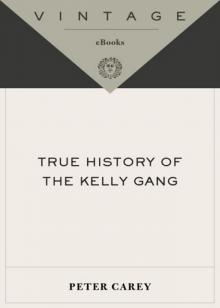 True History of the Kelly Gang
True History of the Kelly Gang 30 Days in Sydney: A Wildly Distorted Account
30 Days in Sydney: A Wildly Distorted Account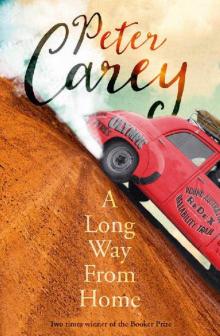 A Long Way From Home
A Long Way From Home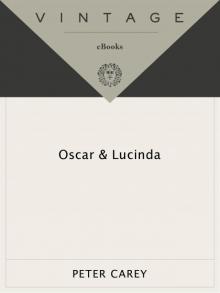 Oscar and Lucinda
Oscar and Lucinda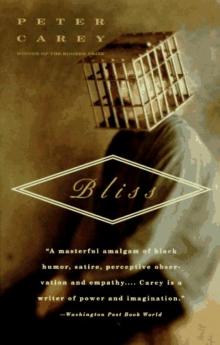 Bliss
Bliss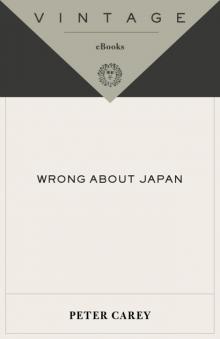 Wrong About Japan
Wrong About Japan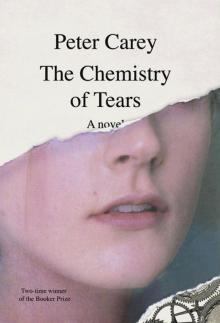 The Chemistry of Tears
The Chemistry of Tears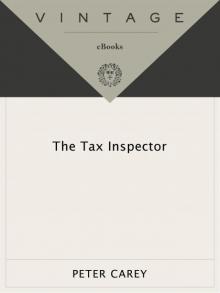 The Tax Inspector
The Tax Inspector Theft: A Love Story
Theft: A Love Story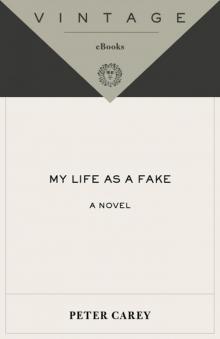 My Life as a Fake
My Life as a Fake Collected Stories
Collected Stories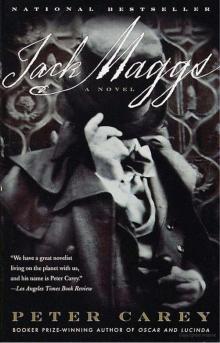 Jack Maggs
Jack Maggs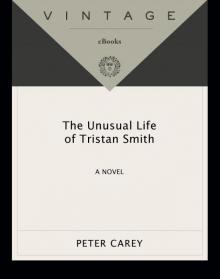 The Unusual Life of Tristan Smith
The Unusual Life of Tristan Smith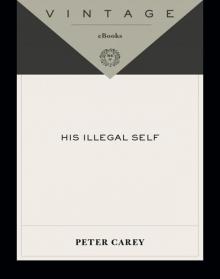 His Illegal Self His Illegal Self His Illegal Self
His Illegal Self His Illegal Self His Illegal Self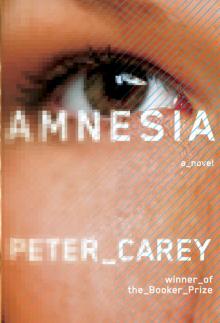 Amnesia: A Novel
Amnesia: A Novel The Big Bazoohley
The Big Bazoohley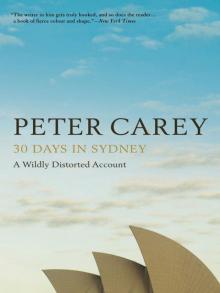 30 Days in Sydney
30 Days in Sydney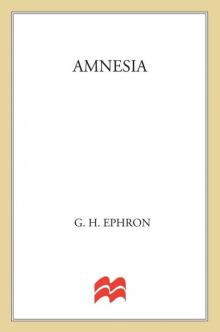 Amnesia
Amnesia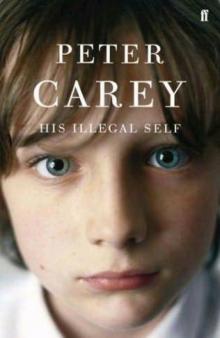 His Illegal Self
His Illegal Self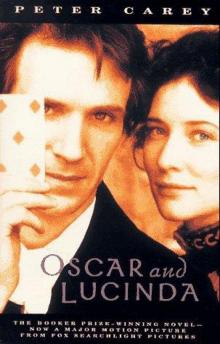 Oscar and Lucinda bw-1988
Oscar and Lucinda bw-1988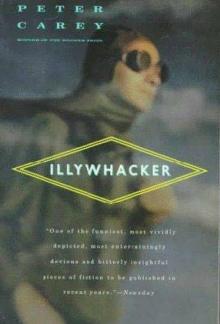 Illywhacker
Illywhacker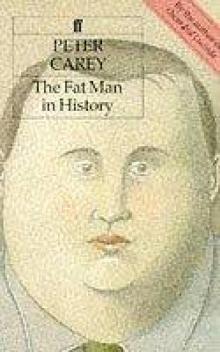 The Fat Man in History aka Exotic Pleasures
The Fat Man in History aka Exotic Pleasures